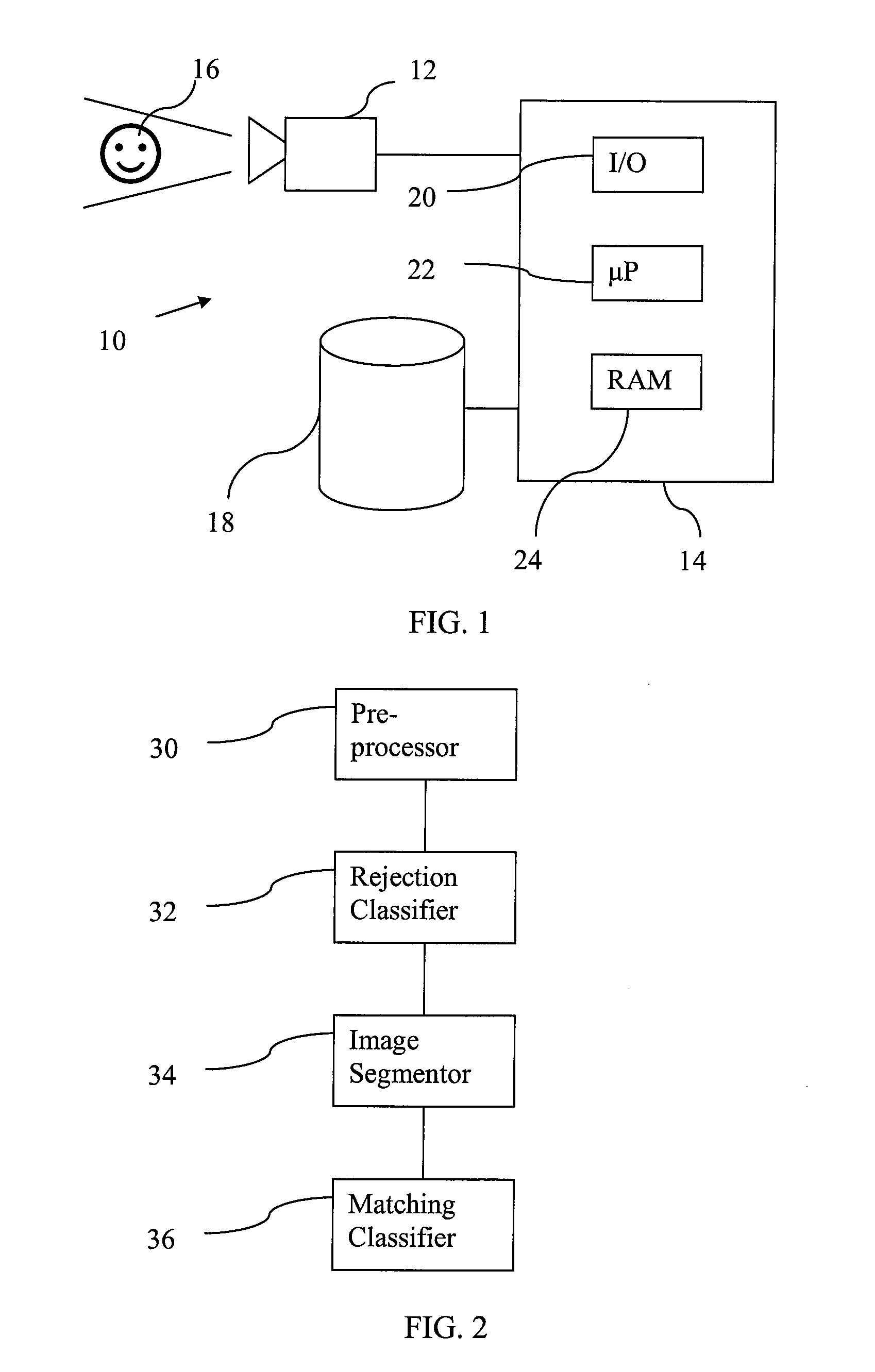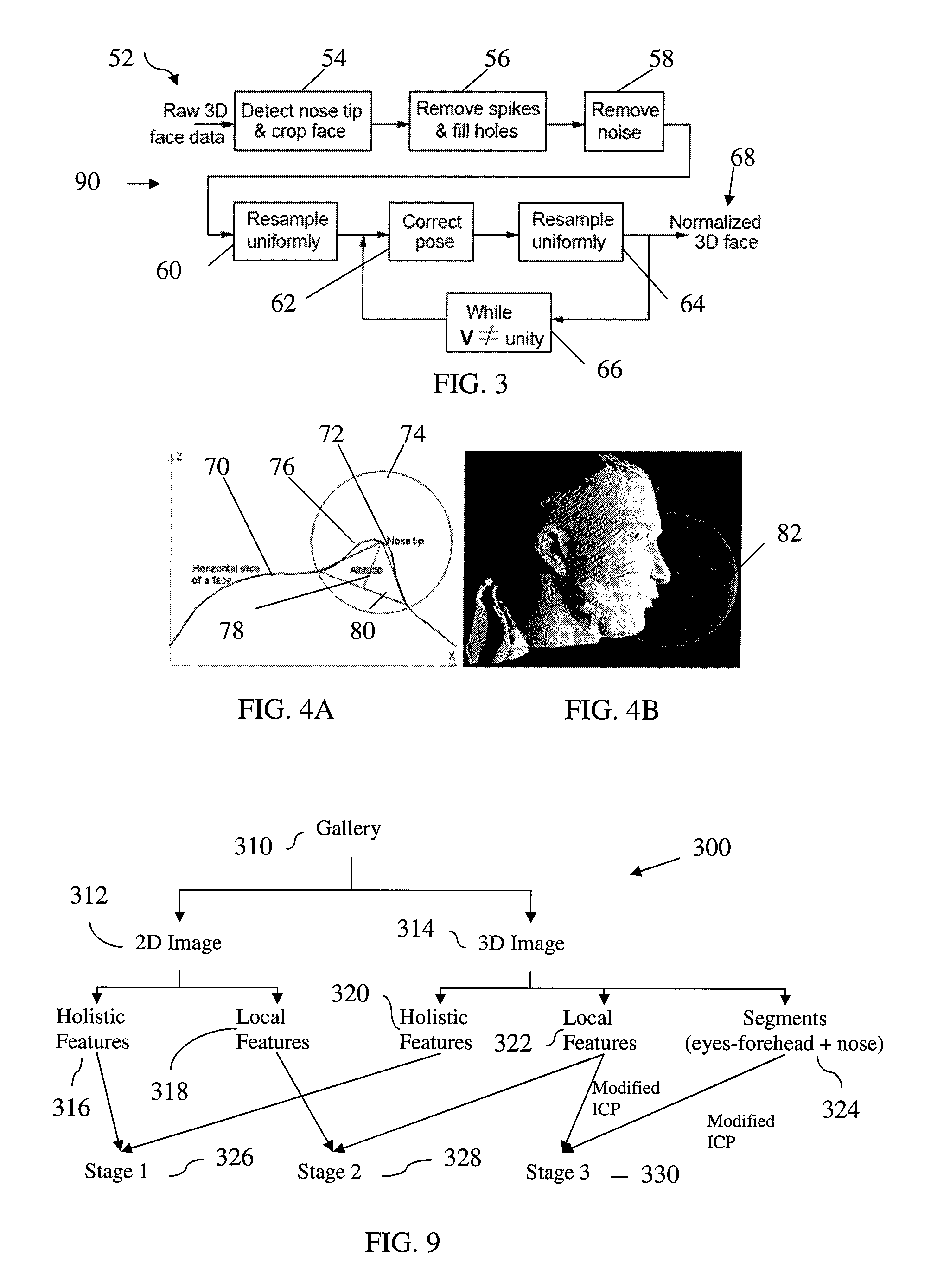Image recognition
a technology of image recognition and image, applied in the field of image recognition, can solve the problems of reducing the accuracy of mass recognition, and producing on average 100 inaccurate results, so as to achieve the effect of reducing the distance error
- Summary
- Abstract
- Description
- Claims
- Application Information
AI Technical Summary
Benefits of technology
Problems solved by technology
Method used
Image
Examples
Embodiment Construction
[0094]Referring to FIG. 1, there is shown an image recognition system 10, which comprises a camera 12 and a recognition device 14. The recognition device 14 is typically a computer having a processor 22 arranged to operate under the control of instructions of a computer program to perform recognition of an image set captured by the camera 12. The computer program is typically loaded from a storage media, such as a CD, hard disk, or flash memory, into RAM of the computer for execution.
[0095]The camera 12 is capable of capturing an image set comprising a 2-D image and a 3-D image, which are registered with each other. That is, they are taken from the same or substantially the same point of view to capture an image of the same subject 16 and each point in the 3-D image can be mapped to one or more corresponding points in the 2-D image or vice versa. The resolution need not be the same. The 3-D image is formed from, for example, a laser scanner of the camera 12 which finds the range (fr...
PUM
 Login to View More
Login to View More Abstract
Description
Claims
Application Information
 Login to View More
Login to View More - R&D
- Intellectual Property
- Life Sciences
- Materials
- Tech Scout
- Unparalleled Data Quality
- Higher Quality Content
- 60% Fewer Hallucinations
Browse by: Latest US Patents, China's latest patents, Technical Efficacy Thesaurus, Application Domain, Technology Topic, Popular Technical Reports.
© 2025 PatSnap. All rights reserved.Legal|Privacy policy|Modern Slavery Act Transparency Statement|Sitemap|About US| Contact US: help@patsnap.com



